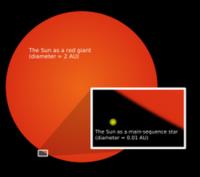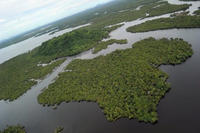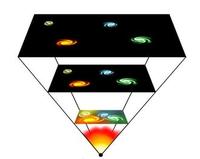-
Enjoy it while you can: 850 million more years before oceans boil away

Scientists had estimated that the Earth’s oceans would boil away in about 150 million years. The reason: the sun expands as it runs out of hydrogen fuel, and that expansion, 150 million years from now,would cause “runaway” global warming leading to the boiling of the oceans. Scientists have now found that the Earth’s “Goldilocks Zone” — where it is neither too hot nor too cold for liquid to exist on a planet orbiting a star— is slightly larger than previously thought, meaning Earth has bought itself some additional time — about 700 million years – before the oceans evaporate.
-
-
DHS announces expansion of cyber student volunteer initiative
DHS the other day announced the launch of the 2014 Secretary’s Honors Program (SHP) Cyber Student Volunteer Initiative for college students. Through the program, more than 100 unpaid student volunteer assignments will be available to support DHS’ cyber mission at local DHS field offices in over sixty locations across the country.
-
-
Uranium found to be mobile in a natural wetland

Because they are known to mop up pollutants, artificial wetlands are considered to be an efficient strategy to contain waterborne uranium. Studying a natural wetland near a former uranium-mining site in the French region of Limousin, however, researchers have found that under certain circumstances, uranium can be partly remobilized into the surrounding water. The researchers show how it becomes mobile again by binding to tiny metallic and organic compounds with a little help from ambient bacteria.
-
-
Shot spotting system helps Stockton, Calif. Police reduce gunfire
ShotSpotter sensors detect gunfire, then immediately transmit a signal to control center where technicians use triangulation to locate the spot of origin of the firing to within five to ten feet. The technician reports the location within thirty to forty seconds to the police to dispatch officers to the scene. Stockton, California police has been using ShotSpotter for nine months now, and the police chief says the system has helped reduce gunfire in the covered area by fifty percent.
-
-
Collapse of the universe closer than previously thought

Maybe it happens tomorrow. Maybe in a billion years. Physicists have long predicted that the universe may one day collapse, and that everything in it will be compressed to a small hard ball. New calculations by physicists now confirm this prediction — and they also conclude that the risk of a collapse is even greater than previously thought.
-
-
Motivating pupils to maintain interest in math, science
The lack of interest in math or natural sciences is one of the most frequently voiced causes for concern in the debate surrounding education, at least in Germany. It has been seen time and again that pupils lose their enthusiasm for physics, chemistry, and math once they reach eighth or ninth grade. Is this inevitable, however? If not, how can teachers steer a different course? Researchers create professional development program to promote open dialog in the classroom – an alternative to the rigid style of communication most science teachers use to get their subjects across.
-
-
U.S. loses clean electricity as nuclear power plants keep closing
Four nuclear power plants, sources of low-emissions electricity, have announced closings this year. The main reason: the increasing availability of cheap natural gas as a result of fracking. If plants continue to shut down instead of extending operations, the United States risks losing 60 percent of its clean electricity starting in 2030, according to a new report by the American Physical Society (APS). The APS calls on socially responsible investors to encourage utilities to consider carbon emissions in business decisions.
-
-
Post-Sandy study shows a polluted but largely intact barrier system off Long Island
As coastal communities continue to rebuild in the wake of Hurricane Sandy, scientists last week reported some encouraging news: The storm did not seriously damage the offshore barrier system that controls erosion on Long Island. Long-term concerns remain about the effects on the region of sea-level rise, pollutants churned up by the storm within back-barrier estuaries, and the damage closer to shore, but in the near-term, Long Island residents can rebuild knowing that Hurricane Sandy did not significantly alter the offshore barrier systems that control coastal erosion on the island.
-
-
Scrapping sea level protection puts Australian homes at risk
As the science on the coastal impacts of climate change gets stronger, the protections for Australia’s coastal communities are getting weaker. Along the eastern seaboard of Australia, where most Australians live, state governments are relaxing their policies and largely leaving it to local councils to decide if homes can be built in low-lying areas.Over the past fifty years, there have been twenty-five national inquiries and reports into coastal management. Those inquiries have overwhelmingly come to the conclusion that rather than leaving it to local councils, Australia needs one set of clear, national guidelines on coastal development and infrastructure. That is the opposite of what we are now seeing around Australia, with a mish-mash of different rules in different states. If that continues, everyone will pay.
-
-
Food security and self-provision of major cities
Wealthy capital cities vary greatly in their dependence on the global food market. The Australian capital Canberra produces the majority of its most common food in its regional hinterland, while Tokyo primarily ensures its food security through import. The Copenhagen hinterland produces less than half of the consumption of the most common foods. For the first time, researchers have mapped the food systems of capital cities, an essential insight for future food security if population growth, climate change, and political instability will affect the open market.
-
-
Global map predicts giant earthquakes
Researchers have developed a new global map of subduction zones, illustrating which ones are predicted to be capable of generating giant earthquakes and which ones are not. The research comes nine years after the giant earthquake and tsunami in Sumatra in December 2004, which devastated the region and many other areas surrounding the Indian Ocean, and killed more than 200,000 people.
-
-
Cybersecurity isn’t all about doom and gloom
Much is made in the press of the devastating effects that weak cybersecurity is having on the economy in the United Kingdom and globally. The threat is compounded by a significant skills shortage. The U.K. government thinks the problem is so severe that it has identified cybersecurity as a Tier 1 national security threat and invested 860 million pounds to defend the country’s digital shores. What all this means is that there is money to be made from cybersecurity and small businesses should not fear it but embrace it. The business opportunities are boundless in cybersecurity. One area that is promising in this sense is the move towards smart cities. As the infrastructure around us, such as traffic lights and utilities becomes more regularly controlled via computers, market opportunities emerge
-
-
Zapping bridges with electricity to test for corrosion
One out of nine of the nation’s bridges is structurally deficient and that more than 30 percent of bridges have exceeded their 50-year design life; the average age of the nation’s bridges is currently forty-two years. Motorists in the United States make more than 200 million trips across bridges rated structurally deficient or in need of significant maintenance and yearly inspection. Of the more than 17,000 bridges in New York, 12.5 percent are structurally deficient and 27 percent are considered functionally obsolete. One major culprit for bridges’ deterioration: corrosion of reinforcing steel. New testing method could replace expensive, time-consuming visual inspections.
-
-
New Jersey shore to face unprecedented flooding by mid-century
Geoscientists estimate that the New Jersey shore will likely experience a sea-level rise of about 1.5 feet by 2050 and of about 3.5 feet by 2100 — 11 to 15 inches higher than the average for sea-level rise globally over the century. That would mean, the scientists say, that by the middle of the century, the one-in-ten year flood level at Atlantic City would exceed any flood known there from the observational record, including Superstorm Sandy.
-
-
No need to worry about getting fried by gamma ray burst

If recent news that University of Alabama in Huntsville (UAH) researchers observed the largest gamma ray burst ever has you nervous about getting blasted into extinction by a massive burst from space, the UAH researchers have good news. The chances of Earth being fried by a burst are exceedingly rare.
-
More headlines
The long view
New Technology is Keeping the Skies Safe
DHS S&T Baggage, Cargo, and People Screening (BCP) Program develops state-of-the-art screening solutions to help secure airspace, communities, and borders
Factories First: Winning the Drone War Before It Starts
Wars are won by factories before they are won on the battlefield,Martin C. Feldmann writes, noting that the United States lacks the manufacturing depth for the coming drone age. Rectifying this situation “will take far more than procurement tweaks,” Feldmann writes. “It demands a national-level, wartime-scale industrial mobilization.”
How Artificial General Intelligence Could Affect the Rise and Fall of Nations
Visions for potential AGI futures: A new report from RAND aims to stimulate thinking among policymakers about possible impacts of the development of artificial general intelligence (AGI) on geopolitics and the world order.
Smaller Nuclear Reactors Spark Renewed Interest in a Once-Shunned Energy Source
In the past two years, half the states have taken action to promote nuclear power, from creating nuclear task forces to integrating nuclear into long-term energy plans.
Keeping the Lights on with Nuclear Waste: Radiochemistry Transforms Nuclear Waste into Strategic Materials
How UNLV radiochemistry is pioneering the future of energy in the Southwest by salvaging strategic materials from nuclear dumps –and making it safe.
Model Predicts Long-Term Effects of Nuclear Waste on Underground Disposal Systems
The simulations matched results from an underground lab experiment in Switzerland, suggesting modeling could be used to validate the safety of nuclear disposal sites.
